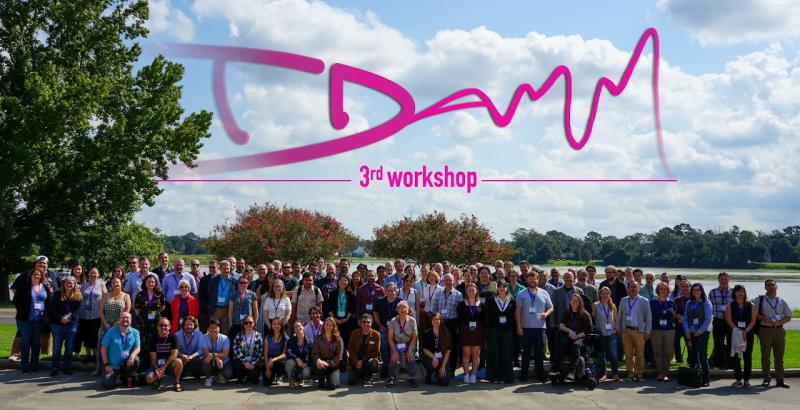Data
2024 Multidisciplinary Science in the Multimessenger Era (TDAMM) Workshop

To foster multidisciplinary research in the area of explosive astrophysical transients, DOE supported CeNAM, DOE’s LANL, NASA’s PhysCOS, LSU, and the NSF hosted the 3rd in a series of Time Domain and Multimessenger (TDAMM) workshops in Baton Rouge, LA on September 23 – 26, 2024, focused on Multidisciplinary Science in the Multimessenger Era of Astrophysics. Astrophysical phenomena of interest included active galactic nuclei, core collapse supernovae, magnetars, neutron star mergers, novae, thermonuclear supernovae, tidal disruption events, x-ray binaries, gamma-ray bursts, fast radio bursts, and fast blue optical transients. Advancing research related to these events, and addressing the many open questions, requires multi-disciplinary work across a broad range of fields. Nuclear physics featured prominently in many of the science opportunities discussed. Other fields represented were astronomy and astrophysics, gravity, plasma physics, atomic physics, condensed matter physics, computational physics, fluid dynamics, high energy density physics, and transport theory.
The workshop goals were to identify opportunities in two directions, using information from other fields to interpret astrophysical observations and also using astrophysical observations to probe outstanding questions in other fields. We invited the community to review the current state of resources in these relevant fields, reporting on existing collaborations and partnerships which cross disciplines, and identify barriers to multidisciplinary research. This workshop sought to understand how the scientific return of facilities can be maximized through alignment of existing initiatives, facilities, and mechanisms and, if necessary, suggest the creation of new ones. Lastly, participants were asked to conceive of methods to sustain growth in this area. The output of the workshop is a white paper, now available on the arXiv, addressing these questions.
